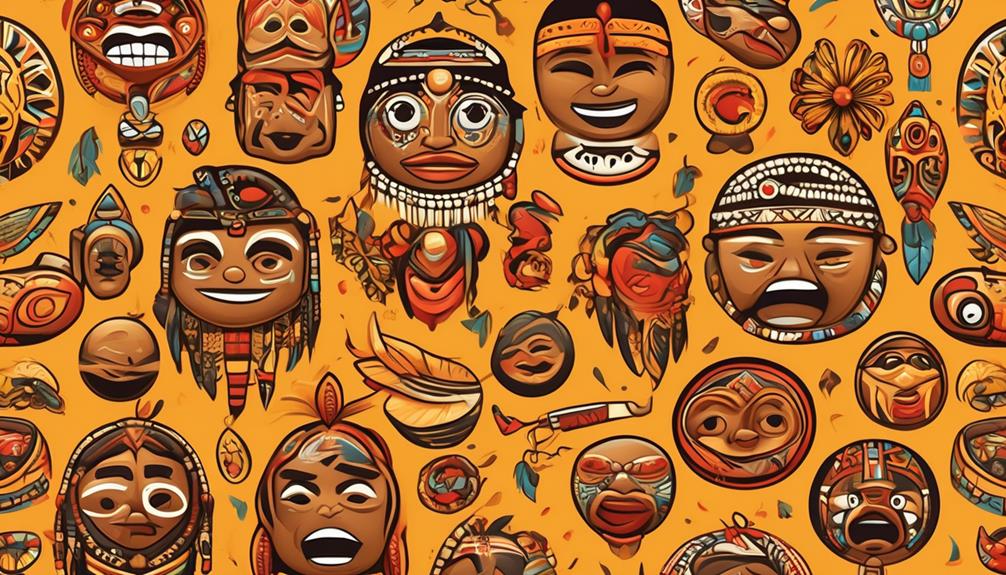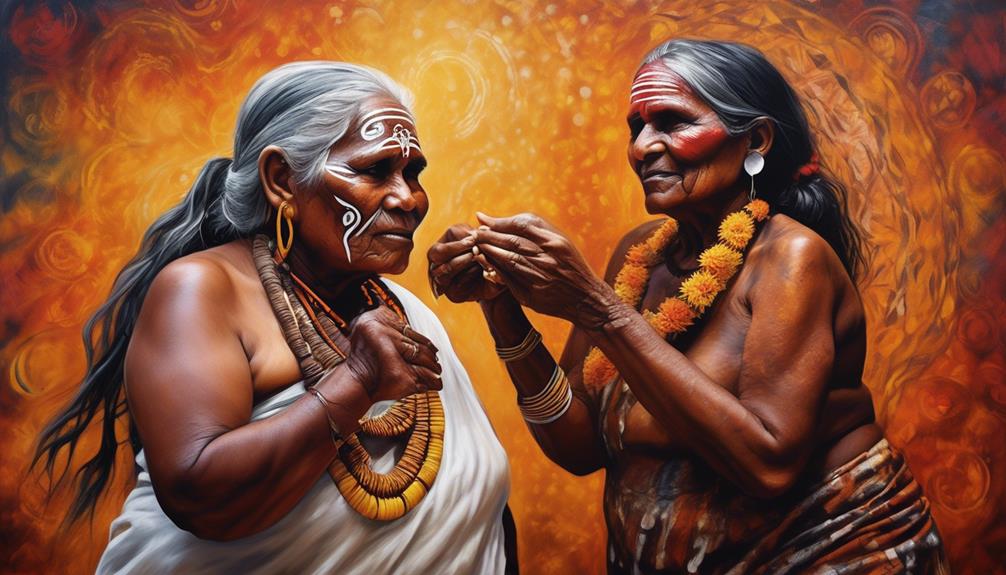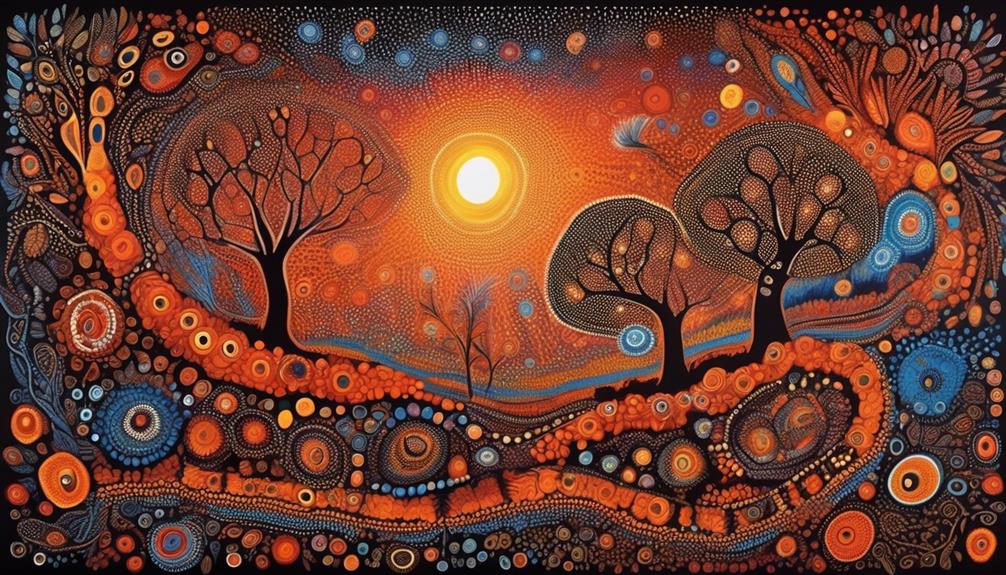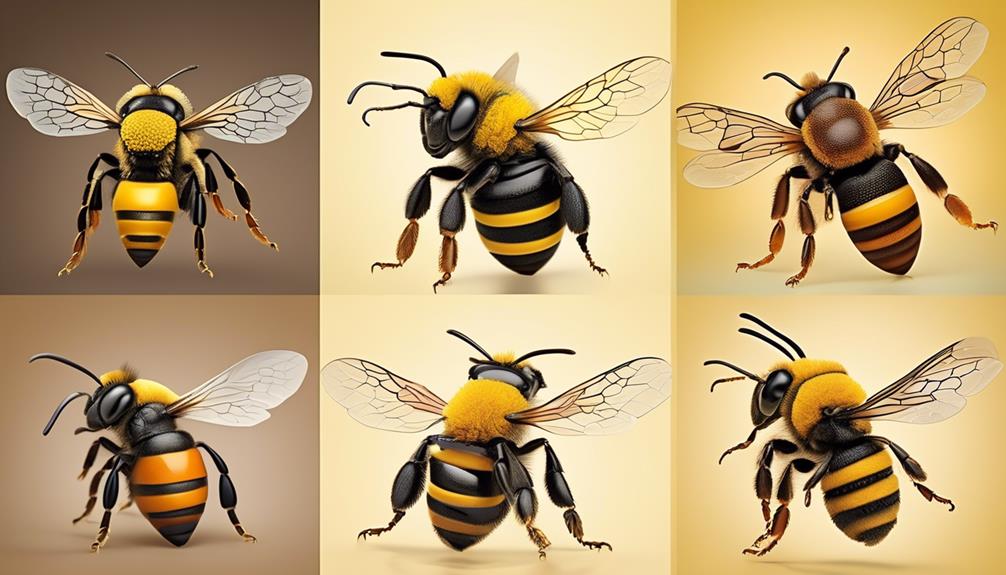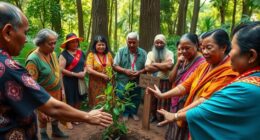You’ve probably heard the saying, “a picture is worth a thousand words,” and emojis have become a universal language in the world of digital communication.
However, have you ever stopped to consider the lack of representation of Aboriginal culture in the emoji lexicon? The absence of emojis depicting Aboriginal people, traditions, and symbols raises important questions about the inclusivity of digital communication.
As you explore this topic, you'll discover the significance of creating emojis that accurately represent Aboriginal culture, the challenges in doing so, and the potential impact on fostering cultural understanding.
Key Takeaways
- Aboriginal emojis can foster cultural representation and understanding in the digital age.
- They provide a means of expressing and celebrating indigenous identity.
- Aboriginal emojis are symbolic communication tools that carry deep cultural meanings.
- They can convey emotions, traditions, and experiences in digital conversations.
The Significance of Aboriginal Emoji
The significance of Aboriginal emoji lies in their potential to foster cultural representation and understanding in the digital age, offering a means of expressing and celebrating indigenous identity in the global online community.
Cultural representation is a vital aspect of fostering inclusivity and understanding in the digital sphere. The introduction of Aboriginal emoji provides a symbolic communication tool that allows indigenous peoples to express their cultural identity in a medium that's widely used and understood globally.
These emoji serve as visual symbols that carry deep cultural meanings, enabling indigenous individuals to convey their emotions, traditions, and experiences in digital conversations.
By incorporating Aboriginal emoji into digital communication platforms, the global online community can gain a deeper appreciation and understanding of indigenous cultures, promoting respect and recognition.
This form of symbolic communication not only enriches digital conversations but also contributes to the preservation and celebration of indigenous heritage in the modern, interconnected world.
Challenges in Representing Aboriginal Culture
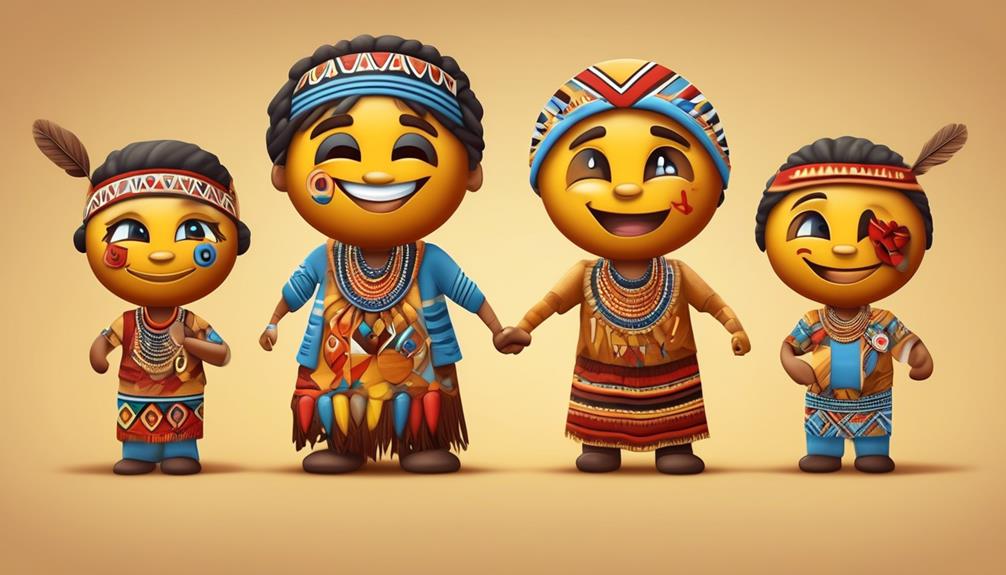
Navigating the representation of Aboriginal culture in digital communication platforms poses several unique challenges. When it comes to creating emojis or digital representations of Aboriginal culture, it's essential to address the potential for cultural appropriation, as well as the importance of respectful representation.
- Cultural Appropriation: One of the major challenges in representing Aboriginal culture in digital communication is the risk of cultural appropriation. It's crucial to avoid the adoption of Aboriginal symbols, designs, or imagery without permission or proper understanding of their cultural significance.
- Respectful Representation: Another challenge lies in ensuring that the representation of Aboriginal culture is respectful and accurate. This involves consulting with Aboriginal communities and individuals to gain insight into the symbols, traditions, and practices that hold significance.
- Balancing Modernity and Tradition: Finding a balance between modern digital communication and traditional Aboriginal culture can be a significant challenge. It's important to create representations that are relevant in the digital age while honoring the deep-rooted traditions and customs of Aboriginal communities.
Successfully navigating these challenges requires a deep understanding of Aboriginal culture and a commitment to respectful and accurate representation in digital communication platforms.
Potential Impact on Cultural Understanding
Understanding the potential impact of digital representations of Aboriginal culture on cultural awareness and appreciation is imperative in fostering respectful and informed communication. When considering the introduction of emojis representing Aboriginal culture, it is essential to approach the subject with cultural sensitivity and an understanding of the potential implications. The digital representation of Aboriginal culture through emojis has the potential to both educate and perpetuate stereotypes, depending on the accuracy and context in which they are used.
| Potential Impact on Cultural Understanding | Description |
|---|---|
| Increased Awareness | Emojis can serve as educational tools, increasing awareness and understanding of Aboriginal culture among a global audience. |
| Perpetuation of Stereotypes | Inaccurate or inappropriate use of emojis may perpetuate stereotypes and misconceptions about Aboriginal culture. |
| Cultural Appreciation | Emojis can be utilized to promote cultural appreciation and respect for Aboriginal traditions and heritage. |
| Digital Misappropriation | There is a risk of digital misappropriation if emojis are not used in a culturally respectful manner, potentially leading to cultural insensitivity. |
Careful consideration of the potential impact of introducing emojis representing Aboriginal culture is crucial to ensure that digital representations contribute to cultural understanding and respect.
Advocacy for Inclusion in Emoji Diversity
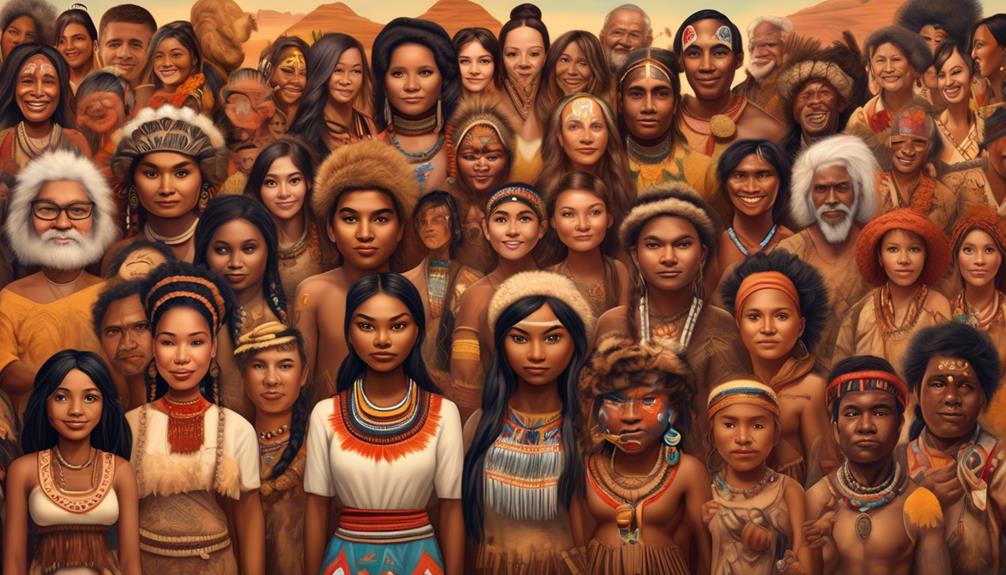
Advocating for greater inclusion of Aboriginal culture in emoji diversity is essential for promoting cultural representation and understanding in digital communication. Emojis have become a universal language, and their diversity should reflect the richness of all cultures, including Aboriginal heritage.
Here are three reasons why advocacy for inclusion in emoji diversity is crucial:
- Representation: Emojis are a form of visual communication, and the inclusion of Aboriginal symbols, art, and cultural elements can provide meaningful representation for Indigenous peoples. It can also help in combating stereotypes and promoting a more accurate portrayal of Aboriginal culture.
- Cultural Diversity: Emojis are a reflection of our diverse society, and by advocating for the inclusion of Aboriginal emojis, we acknowledge and celebrate the cultural diversity of our world. It fosters a more inclusive and respectful digital environment for people of all backgrounds.
- Digital Communication: In today's digital age, emojis play a significant role in communication. Advocating for inclusion in emoji diversity ensures that Aboriginal perspectives are integrated into this modern form of expression, fostering cross-cultural understanding and appreciation.
Advocacy for inclusion in emoji diversity is a crucial step towards creating a more inclusive and representative digital space.
Embracing Aboriginal Identity in Digital Communication
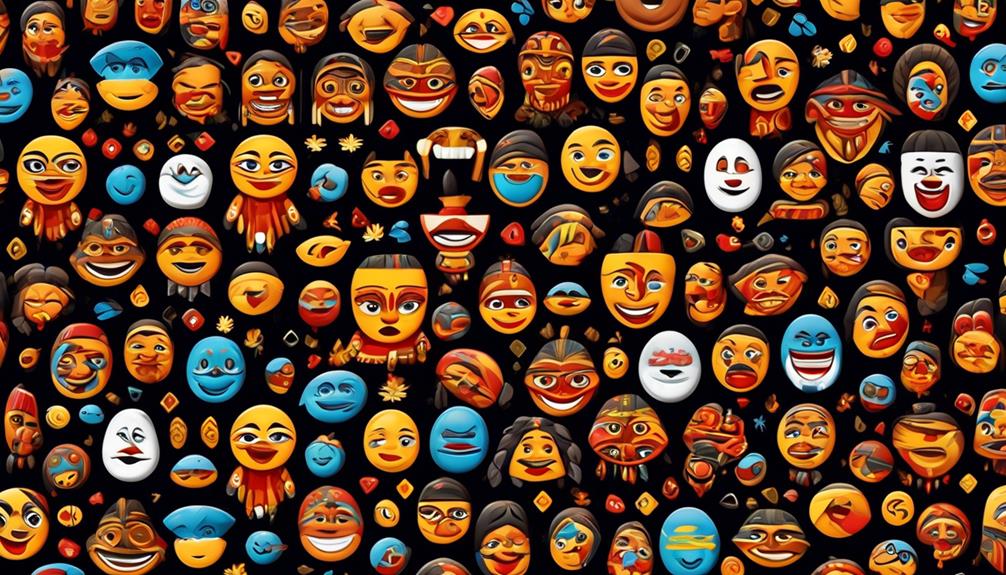
Embracing the rich tapestry of Aboriginal identity within digital communication is a vital step towards fostering cross-cultural understanding and inclusivity in online interactions. The representation of Aboriginal culture in digital communication is an important aspect of acknowledging and celebrating the diverse heritage of Indigenous communities. Cultural representation through emojis, stickers, and other digital mediums allows for the expression of identity and experiences that have historically been underrepresented in online spaces. By incorporating symbols, images, and language that reflect Aboriginal heritage, digital communication becomes a platform for cultural preservation, recognition, and respect.
Furthermore, embracing Aboriginal identity in digital communication provides an opportunity for non-Indigenous individuals to learn about and engage with Aboriginal culture in a respectful and meaningful manner. It encourages conversations that promote awareness, appreciation, and understanding of the complexities of Indigenous identities. This integration of Aboriginal representation in digital communication also contributes to the broader societal goal of reconciliation and inclusivity. It signifies a shift towards a more equitable and diverse online environment, where all cultures are acknowledged and celebrated.
Frequently Asked Questions
What Is the History of Emoji and Its Use in Digital Communication Within Aboriginal Communities?
The history of emoji is integral to Indigenous digital communication. It has provided a means for cultural expression and language preservation within Aboriginal communities.
However, there's also the risk of cultural appropriation. As digital communication continues to evolve, it's essential to recognize the significance of emoji in representing Indigenous cultures while also respecting and preserving their unique heritage.
Are There Any Specific Guidelines or Considerations for Non-Indigenous Individuals Using Aboriginal Emoji in Their Digital Communication?
When using Aboriginal emoji in digital communication, it's crucial to prioritize cultural sensitivity and communication etiquette. Respect the significance of these symbols and consider the context in which they're being used.
Non-indigenous individuals should approach their use with mindfulness and a willingness to learn. It's important to understand the cultural significance and potential impacts of these emoji.
How Can the Creation and Use of Aboriginal Emoji Contribute to the Preservation and Promotion of Aboriginal Languages and Customs?
By creating and using aboriginal emoji, you can contribute to the preservation and promotion of aboriginal languages and customs. These visual symbols can serve as a means to celebrate and showcase the richness of indigenous cultures, fostering greater awareness and appreciation.
They provide a unique opportunity to integrate traditional elements into modern digital communication, serving as a bridge between the past and the present, helping to keep customs alive and languages thriving.
What Are Some Potential Risks or Challenges Associated With the Misinterpretation or Misuse of Aboriginal Emoji in Digital Communication?
When using Aboriginal emoji, misinterpretation risks and misuse challenges may arise.
Misinterpretation risks could stem from a lack of understanding or cultural sensitivity, leading to unintended offense.
Misuse challenges may come into play if the emoji are used inappropriately or without proper context.
It's crucial to approach the creation and use of Aboriginal emoji with respect and awareness, to mitigate these potential risks and challenges in digital communication.
How Can the Development of Aboriginal Emoji Be Inclusive of Diverse Aboriginal Cultures and Identities Across Different Regions and Communities?
To ensure inclusive representation and cultural sensitivity in the development of Aboriginal emoji, it's crucial to acknowledge and respect the diversity of regional identities and Aboriginal cultures.
This entails collaborating with diverse Aboriginal communities to understand their unique cultural symbols and traditions.
Conclusion
In conclusion, the introduction of Aboriginal emoji holds significant potential for promoting cultural understanding and inclusivity in digital communication.
While there are challenges in accurately representing Aboriginal culture, the advocacy for diversity and representation is crucial.
Embracing Aboriginal identity in emoji can foster greater recognition and respect for Indigenous communities.
By incorporating these symbols into our digital interactions, we can celebrate and honor the rich heritage of Aboriginal cultures.
